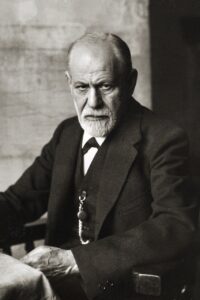仏教とマインドフルネス (Buddhism and Mindfulness)

京都の寺の正門 (ブログ作成者が京都へ出張したときに撮った写真)
マインドフルネスの資料を、インターネットで検索していたら、偶然に Humanities: The Magazine of the National Endowment for the Humanities という雑誌を見つけた。その内容を見ると、” Buddha and Mindfulness: How a religious practice came to fascinate neuroscientists and gave birth to the mindfulness movement" 「仏陀と精神ー如何にして宗教の実践が神経科学者たちを魅了しマインドフルネス運動を生んだのか」というタイトルの論文があったので、すぐに読んでみた。そこでは仏教がマインドフルネスに変化する様子が、詳しく示されていた。
筆者はイエール大学出身の James Flynn で、大学では歴史が専攻である。
仏教から発展したマインドフルネス
仏教の瞑想から発展したマインドフルネスは、現代のカッコイイ言葉で、多くの人が口にしている。その考え方は、論文の中で、次のように簡潔のまとめられている。
Mindfulness has become a buzzword. The concept is typically defined as “a kind of nonelaborative, nonjudgmental, present-centered awareness in which each thought, feeling, or sensation that arises in the attentional field is acknowledged and accepted as it is.”
(訳) マインドフルネスという言葉は、現代多くの人が口にする言葉になった。その考えは、「一種の粗削りで、判断をしない、現在を中心とする意識であり、注意を向ける分野で起こる思想や感情あるいは感覚を、そのままに承認し受け入れること」である。
仏教からマインドフルネスを引き出したのは、マサチューセッツ医科大学教授の Jon Kabat-Zinn の活躍がある。
In doing so, he changed the goal of meditation from the soteriological attainment of nirvana to one that was palatable to Westerners and measurable scientifically, namely stress reduction.
(訳) そのようにすることで、彼はニルヴァーナの救済的達成という目標から、ストレス低減という西欧人に好ましく、科学的に測定可能な目標に変えた。
ハーヴァード大学医学部の心理学教授 Sara Lazar も、マインドフルネスの普及に貢献している。
“After you have been regularly meditating for a while, you start to change how you view the world and how you view yourself,” she says, adding that these changes have correlates detectable in the brain.
(訳) 「しばらくの間、規則的に瞑想を繰り返していると、世界の見方や自分自身への見方も変わり始める」と彼女は言う。それに加えて、これらの変化は、脳の中にも検出できる相関現象があるとも言う。
しかしマインドフルネスの推進者たちは、仏教の都合のよい部分だけを引用して、都合の悪いところは無視する傾向がある。
Or they might integrate into their research the Dalai Lama’s teachings on compassion, but they stop listening when he gets to the teachings on rebirth.
(訳) あるいは、彼らはダライ・ラマの思いやりについての教えを研究に組み込むが、ダライ・ラマが生まれ変わりの教えを話すと、彼らは聞かなくなる。
マインドフルネスではヨガより仏教が重視される
さらに、ヨガより仏教がマインドフルネスで重要視されるのは、神経学や心理学にとって、仏教は相性が良いからである。
In contrast, Buddhism is more appealing to neuroscientists and psychologists, she says, because “Buddhism is all about the mind, about quieting the mind and learning about the mind, transforming the mind, and we have many tools for studying the mind, both subjectively and objectively.”
(訳) ヨガとは対照的に、仏教は神経科学者や心理学者にとって、より魅力的に見える、と彼女は言う。というのは、「仏教は精神が全てであり、精神を落ち着かせ、精神について学ぶことや精神を変貌させることが全てである。そして私たちは、主観的にも客観的にも、精神を研究する多くの道具を持っている」
ブラウン大学医学部教授 Judson Brewer は、その証拠に仏教は科学に基礎を置いたアプローチをしているからと述べる。
To Brewer, the details closely resemble psychological models of reward-based learning. The Buddha, moreover, gives practical steps to escape this loop, which Brewer employs in his mindfulness programs for addiction. He even makes the bold claim that “Buddhist psychology is exactly the same as modern-day psychology.” For Brewer, “Buddhism is very much a scientifically based approach.”
(訳) ブルーアにとって、詳細な事実は、報酬型学習の心理学的モデルとよく似ている。さらに、仏陀はこの連環から逃れる実践的な方法を教えており、それをブルーアは、中毒治療のマインドフルネス・プログラムに用いている。「仏教心理学は、まさに現代の心理学と同じである」と、彼は大胆な主張さえしている。ブルーアにとって、「仏教は正真正銘、科学に基礎をおいた研究方法」である。
仏教と進化論
仏教を科学的だと主張するのは、植民地主義とダーウィンの進化論が影響を与えている。特に、進化論の出現で、キリスト教の基盤が大きく崩れ、無神論者に陥ったヨーロッパ人には、精神的なよりどころがなかった。そこで ドイツ生まれでアメリカに移住した Paul Carus は、仏教が信仰システムでは最良であると主張した。
この流れの中で、S. N. Goenka は、仏教は科学的と言って、ヨーロッパでヴィパッサナー瞑想を広げていく。ヴィパッサナー瞑想は、自己観察による自己変革の方法であり、この瞑想法では、心と体が互いに影響を与えている深いレベルに焦点を当てる。
S. N. Goenka, a highly influential Vipassana teacher who died in 2013, popularized the idea that his meditation style was itself a kind of internal science, “empirical” in its emphasis on first-person experience (in Goenka’s rhetoric, the Buddha did not intend to start a religion; instead, he was a “super-scientist”).
(訳) 2013 年に死んだ非常に影響力のあるヴィパッサナー教師であった、S. N. ゴエンカは、自分の瞑想方法は一種の精神科学であり、己の経験を強調するので経験論的であるという考えを広めた。ゴエンカの表現では、仏陀は宗教を起こすつもりはなく、彼は「超科学者」であった。
マインドフルネスへの否定的な意見
このように現代では大流行しているマインドフルネス運動であるが、肯定的な意見ばかりではない。
The researchers at Brown speculate that these negative meditation experiences might be the inevitable result of transferring meditation from its traditional role in monasteries to the novel cultural context of the secular West.
(訳) ブラウン大学の研究者たちは、これらの否定的な瞑想経験は、僧院の伝統的な瞑想を世俗的なヨーロッパの新しい文化枠組みに移し替えた、必然的な結果であると考えている。
このようなマインドフルネスの背景を知っておくと、よりよくマインドフルネスが理解できるであろう。実践の中で、欠点や長所も見えてくるのではないだろうか。


